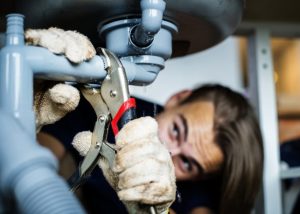Guide To Water Leak Detection In Your Home
EstimatingIn this article below you can find lots of really good resources regarding Locating water leaks.

Early discovery of dripping water lines can minimize a potential disaster. Some tiny water leaks may not be noticeable.
1. Examine the Water Meter
Every house has a water meter. Examining it is a proven manner in which helps you discover leakages. For starters, switch off all the water resources. Guarantee no one will flush, use the faucet, shower, run the washing machine or dishwasher. From there, go to the meter and also watch if it will alter. Given that no person is utilizing it, there must be no movements. If it relocates, that suggests a fast-moving leak. Similarly, if you spot no changes, wait an hour or two as well as examine back again. This implies you might have a slow-moving leak that could also be underground.
2. Examine Water Intake
If you spot sudden changes, regardless of your intake being the exact same, it suggests that you have leaks in your plumbing system. A sudden spike in your bill shows a fast-moving leak.
On the other hand, a stable boost on a monthly basis, despite having the very same habits, shows you have a sluggish leakage that's additionally gradually intensifying. Call a plumber to completely examine your residential or commercial property, particularly if you really feel a cozy area on your flooring with piping underneath.
3. Do a Food Coloring Examination
When it concerns water intake, 30% comes from toilets. Test to see if they are running correctly. Decline specks of food color in the tank as well as wait 10 minutes. There's a leakage in between the tank and dish if the shade in some way infiltrates your dish during that time without flushing.
4. Asses Outside Lines
Don't forget to check your outdoor water lines too. Should water seep out of the link, you have a loose rubber gasket. One small leakage can squander bunches of water as well as increase your water costs.
5. Examine and also Evaluate the Situation
House owners must make it a practice to examine under the sink counters as well as even inside cabinets for any bad odor or mold growth. These two warnings indicate a leak so prompt attention is called for. Doing routine inspections, even bi-annually, can conserve you from a significant trouble.
If you recognize your house is currently old, keep a careful eye on your heating systems, hoses, pipes and so on. Look for discolorations and deteriorating as many pipes and also devices have a life expectancy. They will certainly also naturally wear away because of tear as well as wear. Don't wait for it to intensify if you believe dripping water lines in your plumbing system. Call a professional plumber as soon as possible so you don't wind up with a horrible mess in your home.
Early detection of dripping water lines can minimize a potential calamity. Some small water leaks might not be noticeable. Checking it is a proven method that aids you discover leakages. One small leakage can lose lots of water and also increase your water bill.
If you think leaking water lines in your plumbing system, do not wait for it to escalate.
WARNING SIGNS OF WATER LEAKAGE BEHIND THE WALL
PERSISTENT MUSTY ODORS
As water slowly drips from a leaky pipe inside the wall, flooring and sheetrock stay damp and develop an odor similar to wet cardboard. It generates a musty smell that can help you find hidden leaks.
MOLD IN UNUSUAL AREAS
Mold usually grows in wet areas like kitchens, baths and laundry rooms. If you spot the stuff on walls or baseboards in other rooms of the house, it’s a good indicator of undetected water leaks.
STAINS THAT GROW
When mold thrives around a leaky pipe, it sometimes takes hold on the inside surface of the affected wall. A growing stain on otherwise clean sheetrock is often your sign of a hidden plumbing problem.
PEELING OR BUBBLING WALLPAPER / PAINT
This clue is easy to miss in rooms that don’t get much use. When you see wallpaper separating along seams or paint bubbling or flaking off the wall, blame sheetrock that stays wet because of an undetected leak.
BUCKLED CEILINGS AND STAINED FLOORS
If ceilings or floors in bathrooms, kitchens or laundry areas develop structural problems, don’t rule out constant damp inside the walls. Wet sheetrock can affect adjacent framing, flooring and ceilings.
https://www.servicemasterbyzaba.com/blog/how-to-detect-water-leakage-in-walls/

As a devoted reader on Detecting hidden plumbing leaks, I assumed sharing that piece of content was really useful. Are you aware of another person who is serious about the topic? Why not promote it. We enjoy reading our article about Hacks to detect leaks.